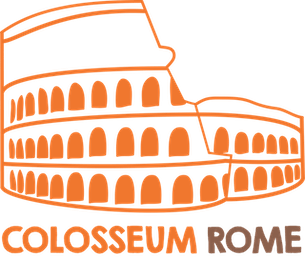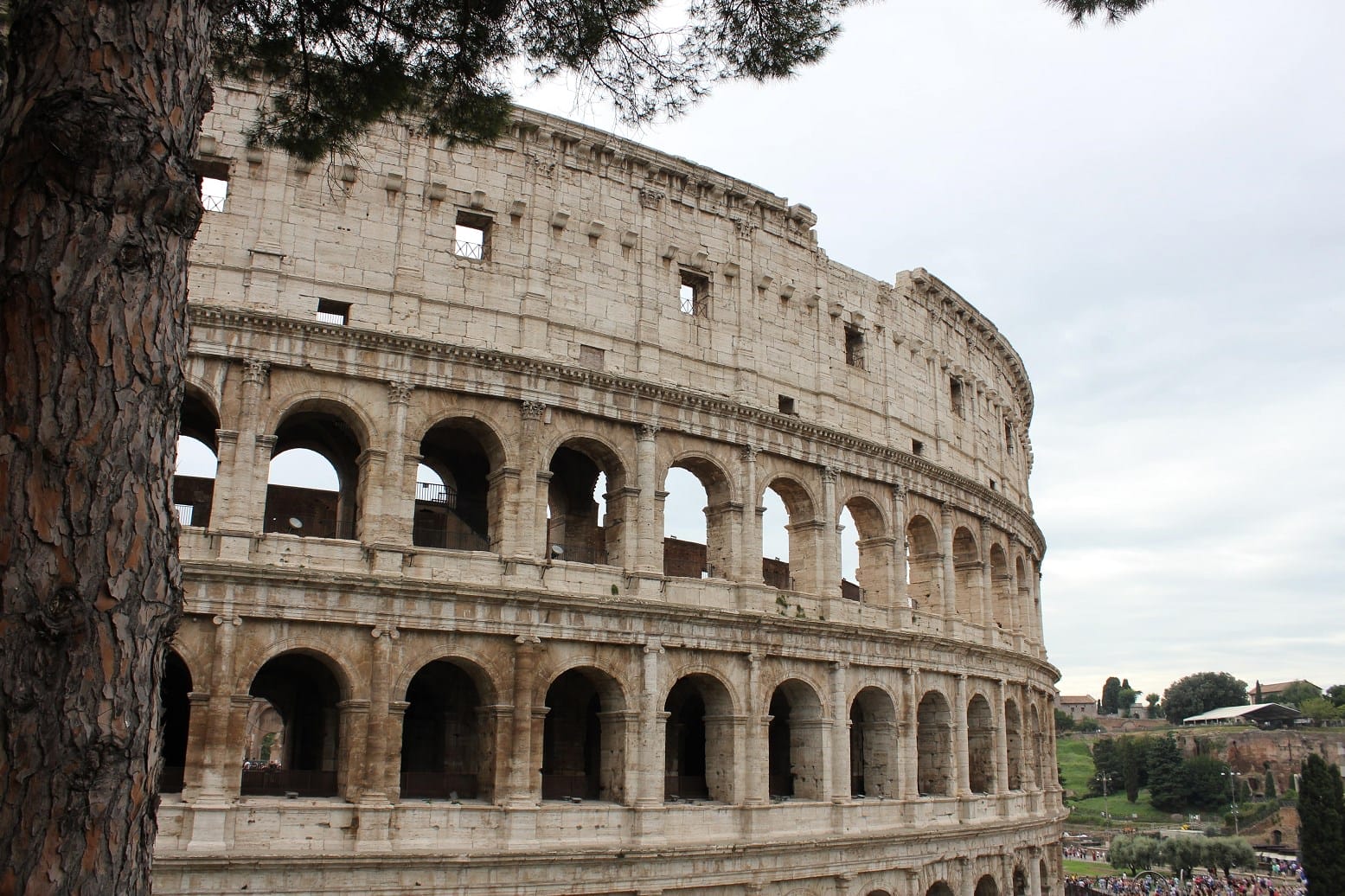
Colosseum facts and history: why is the monument so popular ? (Updated)
What about some Colosseum facts ? The Colosseum is still impressive in its grandeur, even in the world of skyscrapers.
The tourist attraction is one of the most iconic buildings in Italy and is depicted on the Italian version of the five-cent coin. 4 million tourists visit the attraction a year making it the world’s 39th most popular tourist destination.
Contents
- 1 What people think they know about the Colosseum facts ?
- 2 When was the Colosseum built ?
- 3 Facts about the Roman Colosseum
- 4 Why is the Colosseum architecture so unique?
- 5 Who built the Colosseum? – Roman Colosseum facts
- 6 But why was the Colosseum built ?
- 7 In Roman times, who had access to the Colosseum?
- 8 FAQ on Roman Colosseum facts
- 9 Conclusion on Colosseum facts
What people think they know about the Colosseum facts ?
Many people know the image of the Colosseum either through school’s history listens or through travel guides. That image of the amphitheatre lit up in a darkening sky is very recognisable but many people don’t know the facts behind the Roman Colosseum’s construction. Many people may struggle to think of the now ruined building as a shiny example of Roman architecture but it was once pride of the empire.
Films like Gladiator have taught people about the Roman gladiatorial sport where man would fight beast until death, whilst the emperor gave a thumbs up or down to rate the performance. Here we unearth more Roman colosseum facts.
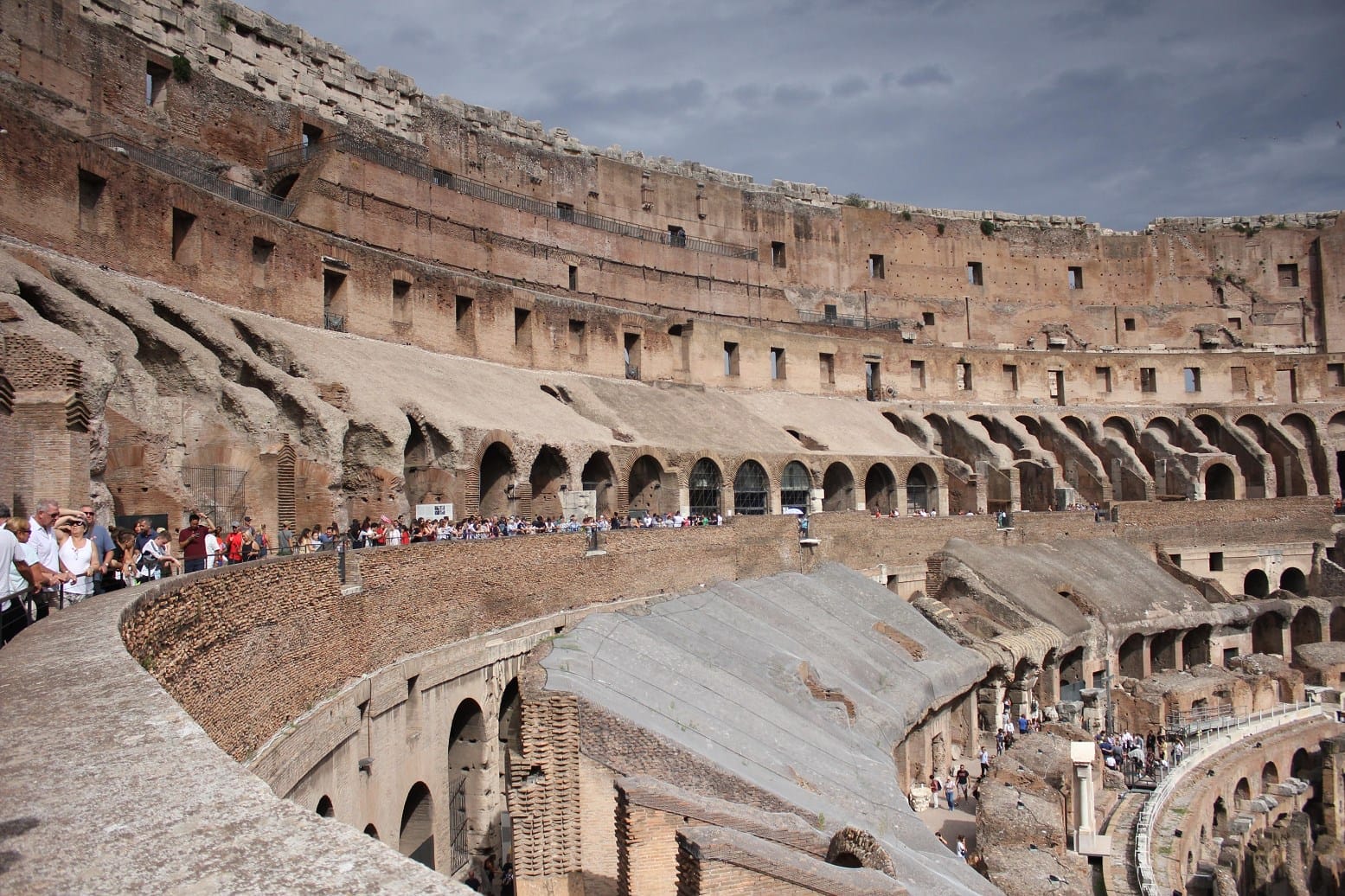
When was the Colosseum built ?
Nero's story
The construction of the Colosseum in Rome commenced in the aftermath of Nero’s extravagance and the rebellion of the Jews in Palestine against the Roman reign. Nero, after the great fire of Rome in AD 64, built a huge lavish palace for himself but when faced with military uprising and civil wars, he committed suicide.
Vespasian construction
The Colosseum was built on the site of Nero’s then burned down palace, out of the takings from the Jewish War, as a political gesture to please the people. The building was part of a big construction program that was started by Vespasian in order to restore Rome to its former glory. The empire wanted to show the world that Rome was still very much in power and was still centre to the ancient world.
A whole Empire
Building commenced in AD 70. The construction had to be well planned as it was built on the site of a lake, so the ground was drained as a precaution and concentre foundations were put down for six metres. It was the largest amphitheatre in the Roman world, capable of holding 50,000 spectators.
The empire would go on to build 250 amphitheatres across their territories. The Colosseum was like nothing Romans had ever seen, situated between the valley joining the Esquiline, Palatine and Caelian hills, it was as grand then as it is now.
The building was four stories high and made from locally quarried limestone with brick, concrete and volcanic stone linking lateral walls. The sheer size of the theatre is likely to be why it was called the Colosseo, but some historians do believe the origin of that name may be because of the colossal gilded statue dedicated to Nero, which was converted to resemble the sun, placed outside the theatre.
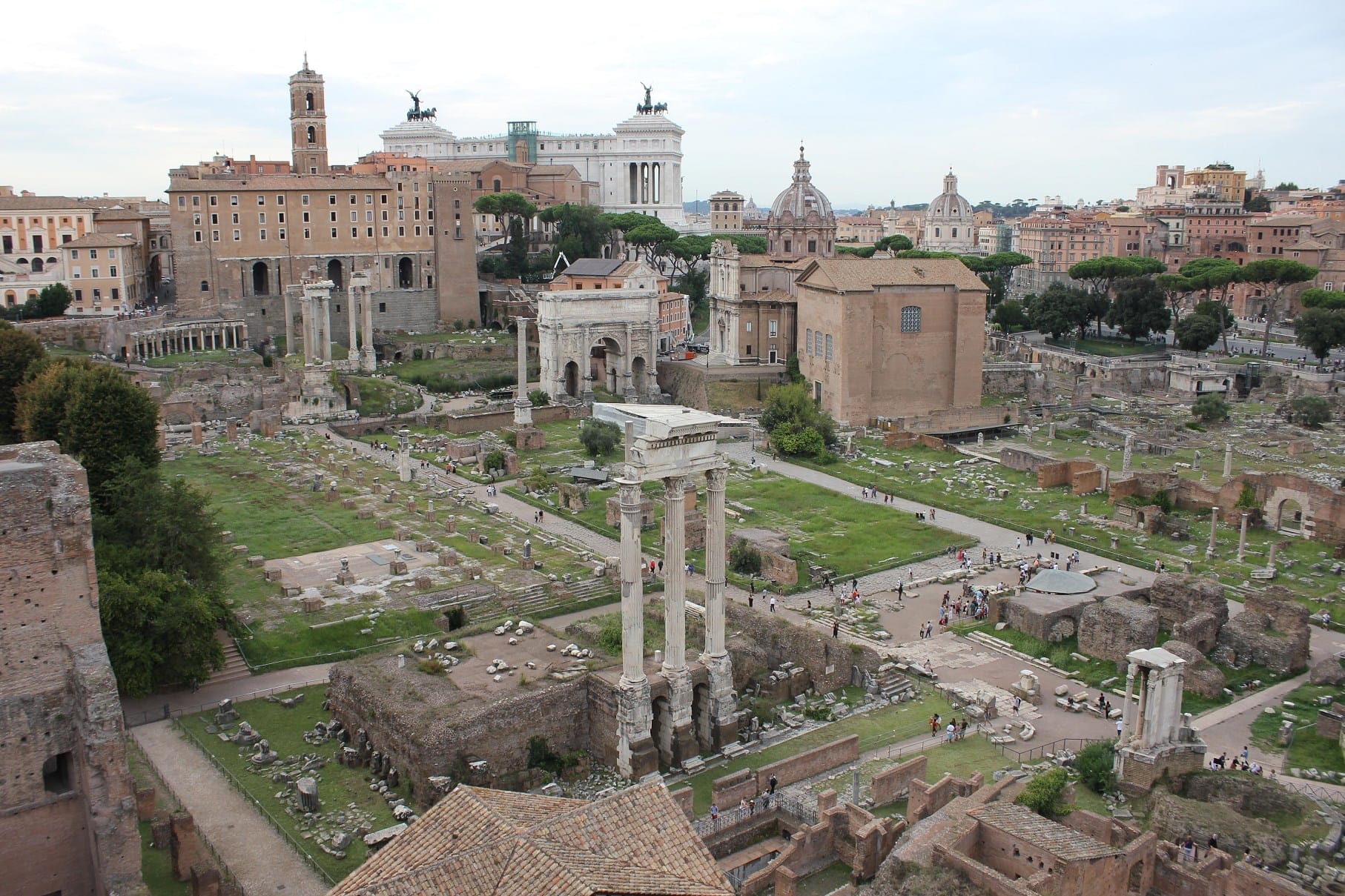
Facts about the Roman Colosseum
- When it was first built the Colosseum was called the Flavian Amphitheatre, after the Flavian dynasty of Emperors which included Vespasian, Titus and Domitian.
- The Romans would sometimes flood the Colosseum and have miniature ship naval battles inside as a form of theatrical entertainment.
- Some marble components of the Colosseum were used in the construction of St Peter’s Basilica and later monuments.
- Many natural disasters have devastated the structure of the Colosseum over the years, but it was the earthquakes of 847 AD and 1231 AD that caused the damage that tourists see today.

Why is the Colosseum architecture so unique?
Colosseum facts about the building
The Colosseum’s amphitheatre is unique because it has a very distinct shape. Most amphitheatres are circular but the Colosseum is oval. The reason it was built in an oval shape was to allow all seats to get a good view of the events without restrictions.
The building stands at 160 feet tall and from end to end stretches over six acres of land. Getting people in and out of the amphitheatre would have been difficult but the many arches and stairways carefully placed within the structure would help this.
There are over 80 arches that lead to several stairways which, in turn, lead to different levels of the monument. This architectural feat involves contracting arches and stairways, which enable emptying the building within a matter of minutes.
Fun facts about the Colosseum : the floor
When it was first designed there was no floor so all events took place on the ground in the centre of the amphitheatre. A wooden floor was later installed, which at the time was incredibly revolutionary.
The floor’s innovative design had poles that went into holes in the ground that held them up, and then wooden boards were placed on the poles forming a makeshift floor. The floor was then covered in sand to make it appear like it was the natural ground. Beneath this suspended floor led a maze of rooms and corridors where performers and acts could prepare and animals were kept.
The building also had hand operated lifts that ran from the basement to the top of the area. These slave operated elevators were how they would transfer performers and animals into the arena.
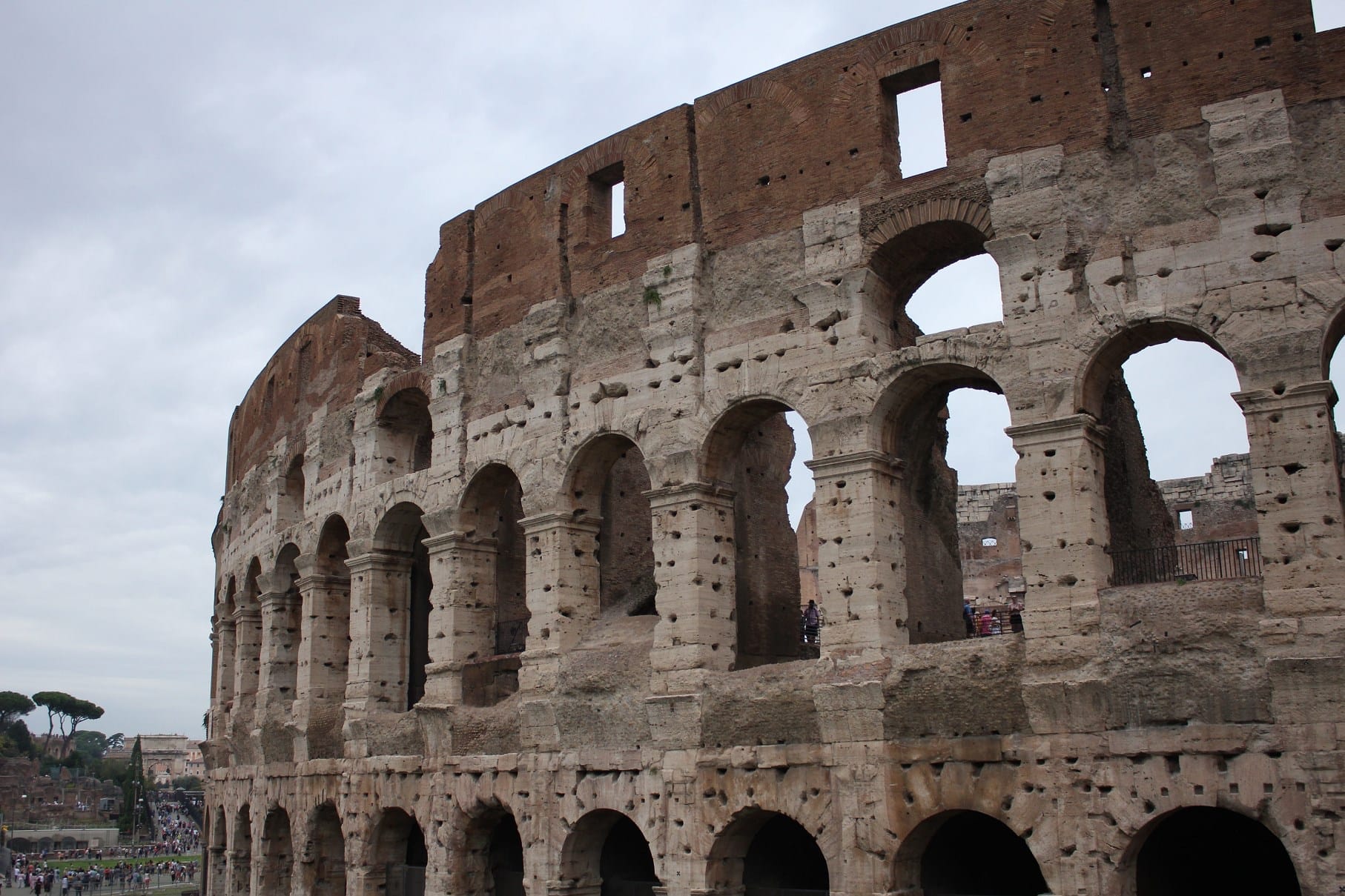
Who built the Colosseum? – Roman Colosseum facts
This is one of the most interesting facts about the Colosseum.
The building of the Roman Colosseum took place between 73 and 75 AD and was completed in 79 AD, with the inauguration games taking places in 81 AD.
An estimated 100,000 prisoners were brought back to Rome as slaves after the Jewish war, meaning Vespasian had a limitless workforce to build his creation. These slaves took on various manual labors like working in quarries and transporting the heavy tiles between Tivoli and Rome. They believe that 200 bullock carts were used to transport marbles to the construction site. Teams of professional builders, painters and decorators took on the skilled tasks. The invention of concrete enabled the amphitheatre to be built quickly and to great effect.
Vespasian’s second son, Emperor Domitian, added the top tier to the Colosseum and the large network of rooms, corridors and cells.
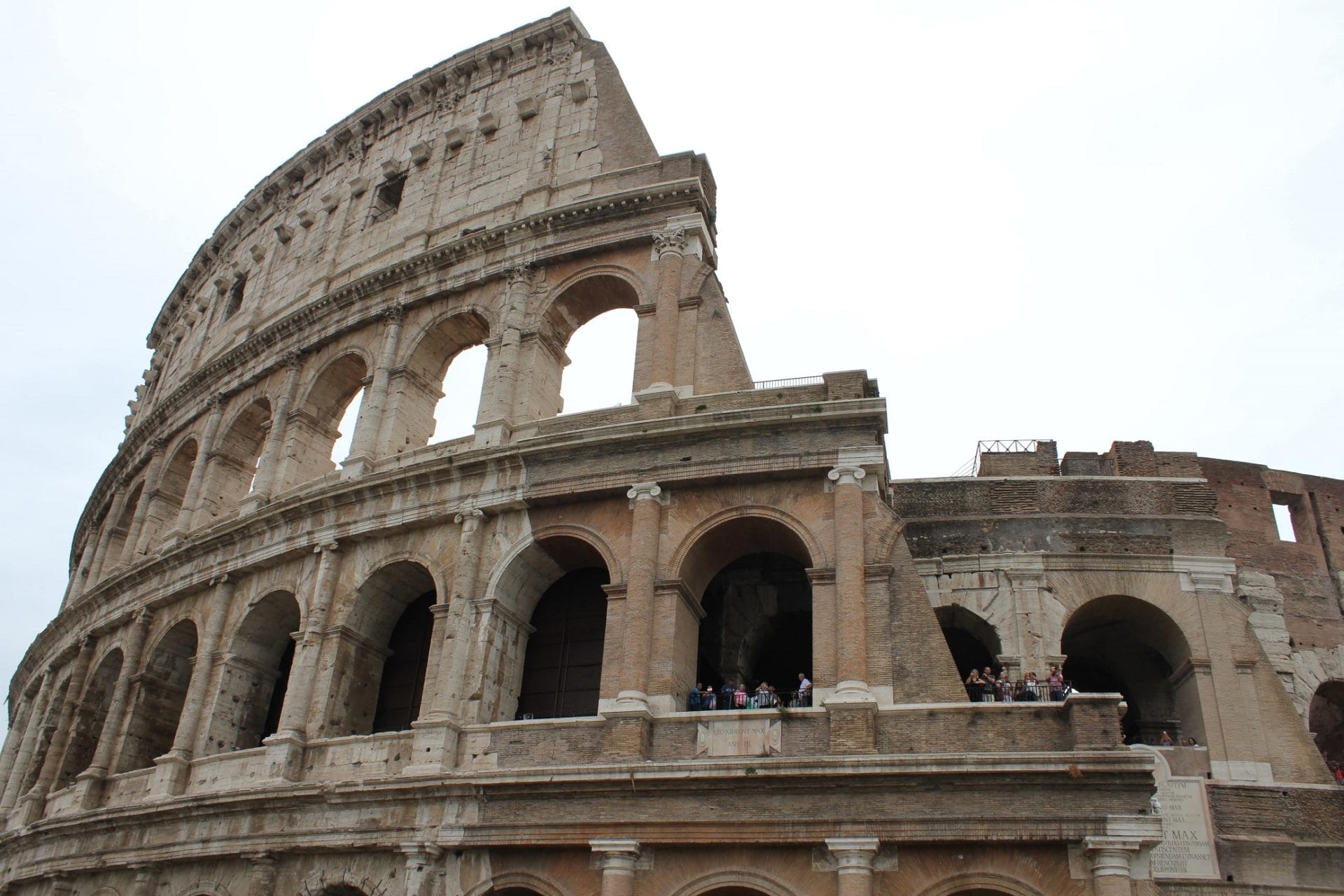
But why was the Colosseum built ?
So what took place in the Colosseum ? When the Colosseum was first opened, Emperor Titus declared a 100 days of celebratory games that included animal fights and gladiatorial combats. These shows demonstrated power and prestige, and became a big hit with audiences.
The concept of the Colosseum grew from the custom of wealthy Romans holding funeral games to honour the dead. Ancient Romans believed that human sacrifice at the dead person’s funeral would appease their Gods and ensure a safe and happy entrance into the afterlife. These funeral games were paid for by wealthy Roman aristocrats.
The 50,000 spectators would have been seated according to social ranking. Awnings would have been installed on the top story in order to protect audiences from the strong sun.
A large number of wild animals, like crocodiles, hippos and tigers were imported in from Africa and the Middle East. Roughly 9000 animals were slaughtered in the name of entertainment over the years of games.
Thankfully not all the events that took place were based on violence. A Roman Colosseum fact many people won’t realise is that there was also more recreational activities like exotic animal exhibitions, painters working on the arena floor and naval re-enactments.
A Roman Colosseum fact is that the last gladiatorial fight happened in 435 CE and the last animal hunts stopped in 523 CE. This was mainly because it cost too much to maintain the facilities and the procuring of exotic animals. The building stopped being used for entertainment in the early medieval era. It was later reused for such purposes as housing, quarters for a religious order, a fortress, a quarry, and a Christian shrine.
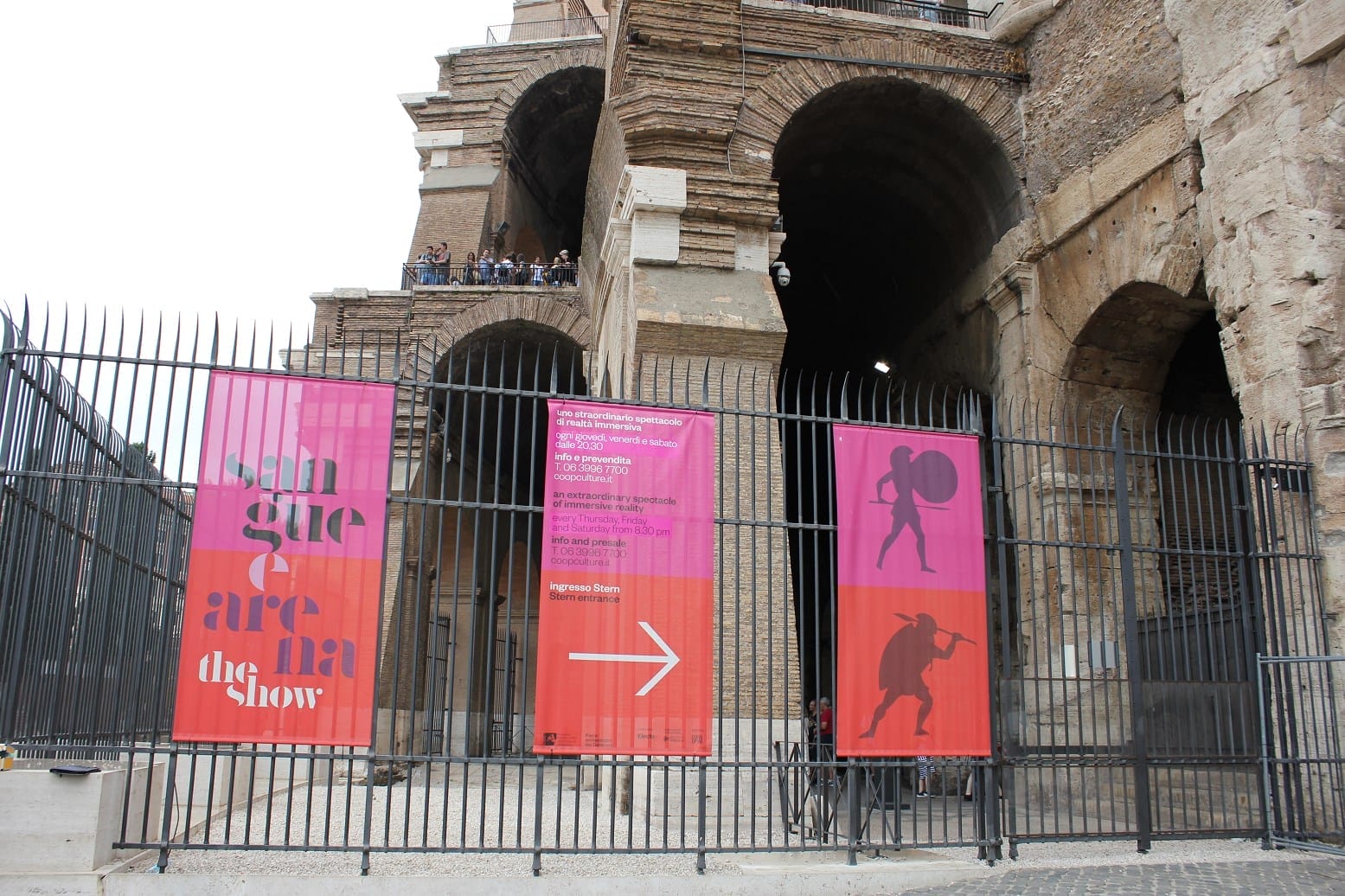
In Roman times, who had access to the Colosseum?
Most of the population had access to Colosseum during Roman times, a Colosseum fact many people may don’t realise, but social classes were not allowed to mingle. The seating at the Colosseum was divided into four mean sections with audience members divided by social status.
Patricians and Plebeians
The Patricians and Plebeians were originally the only two classes of Romans allowed to enter the higher VIP tiers, and then later Equites or Knights were incorporated. The Equites were the group who had control over administration and finance, ranking just under the senate.
In c20 BC Emperor Augustus indicted an official order entitled Lex Lulia, who stipulated the seating arrangement for Roman public venues. This group enforced the class rules all over the Roman Empire, including banning women from public spectacles (they were only allowed in much later).
The 4th tiers distribution
The first tier, called the podium, was reserved for very important Romans like emperors, government officials and senators. This podium would look something like a 15 foot terrace.
The second tier, the maenianum primum, was reserved for non-senatorial noble classes, called Equites, or knights. This area would consist of roughly fourteen rows of stone or marble seating.
The third tier was reserved for normal, ordinary citizens, otherwise known as Plebians. Even in this area audiences were separated into wealthy plebeian and poor plebeian.
The fourth tier, maenianum summum in ligneis, was a section of steep wooden seats in the gallery that run around the top wall of the amphitheatre. This is where common women were allowed to sit, but this rule came in much later in the Colosseum’s history.
There was some standing room in the top tiers and in the aisles.
Slaves were strictly forbidden from the Colosseum. Also, other groups were banned like actors, gravediggers and actors, a little known fact about the Roman Colosseum.
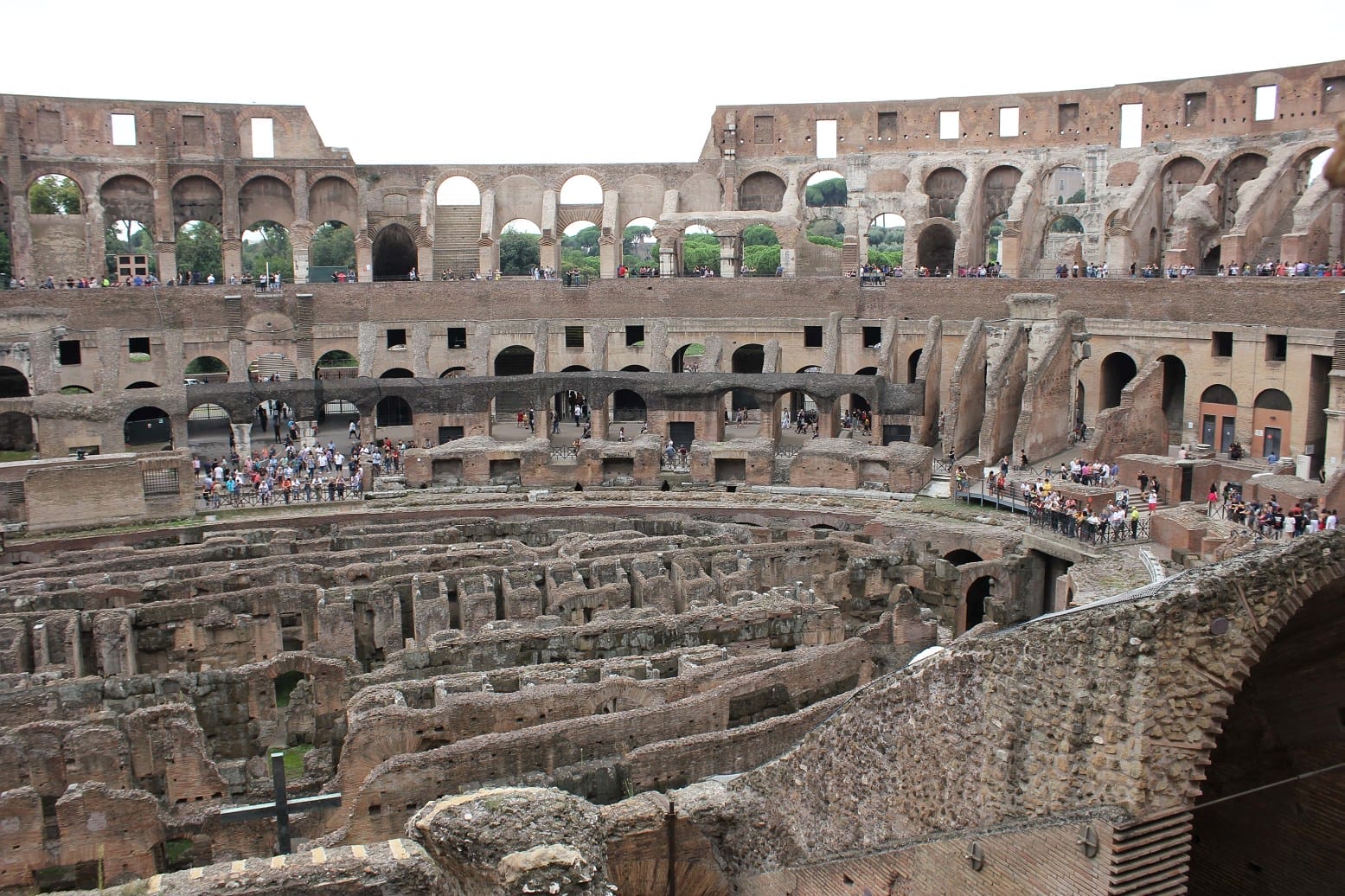
FAQ on Roman Colosseum facts
How many died in the Roman Colosseum ?
It is believed that over the hundreds of years of games in the Colosseum 500,000 people lost their lives and over a million wild animals were killed.
What year was the Colosseum built ?
The construction of the Colosseum began in AD 70 and after 7, 8 years it was finished.
How big is the Roman Colosseum ?
The Colosseum is 620 by 513 feet or 190 by 155 in meters.
How much did the Colosseum cost to build ?
Nobody can tell with certainty. But according to some assumption on how much would cost to build something like that today, it would take around $142 million.
How much of the Colosseum is left ?
Roughly, around one-third is left in good condition and it is popular attraction for tourists from all over the world.
Conclusion on Colosseum facts
The Colosseum is not just a stunning structure that is a must see if you are visiting Rome but it is alos an important part of history. Hopefully, these facts about the Roman Colosseum will make you think differently about the building.
If you know fun facts about the Colosseum that have not been mentionned in this article, feel free to comment below 😉
Fanny, an ardent admirer of ancient history and architecture, has been fascinated by the Colosseum since her first visit to Rome in 2012. As a key contributor to the Visit Colosseum Rome blog, she brings her passion for the Roman Empire’s monumental legacy to every article and guide.
